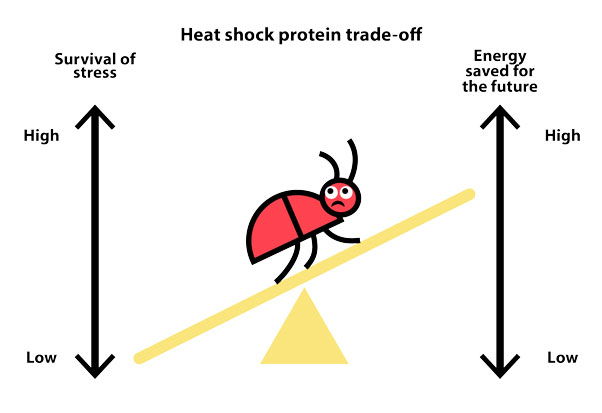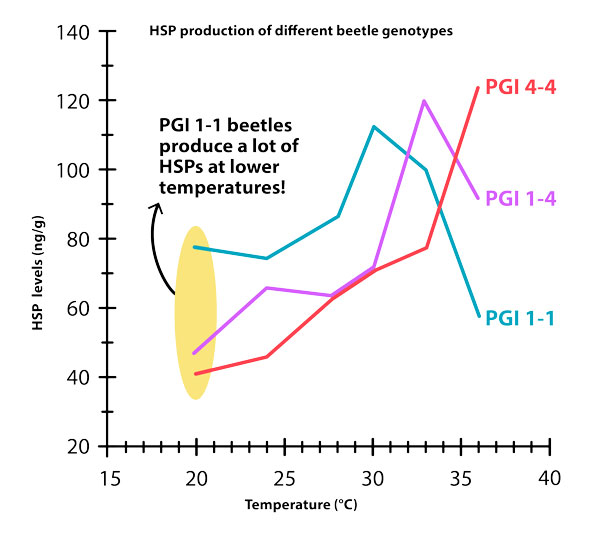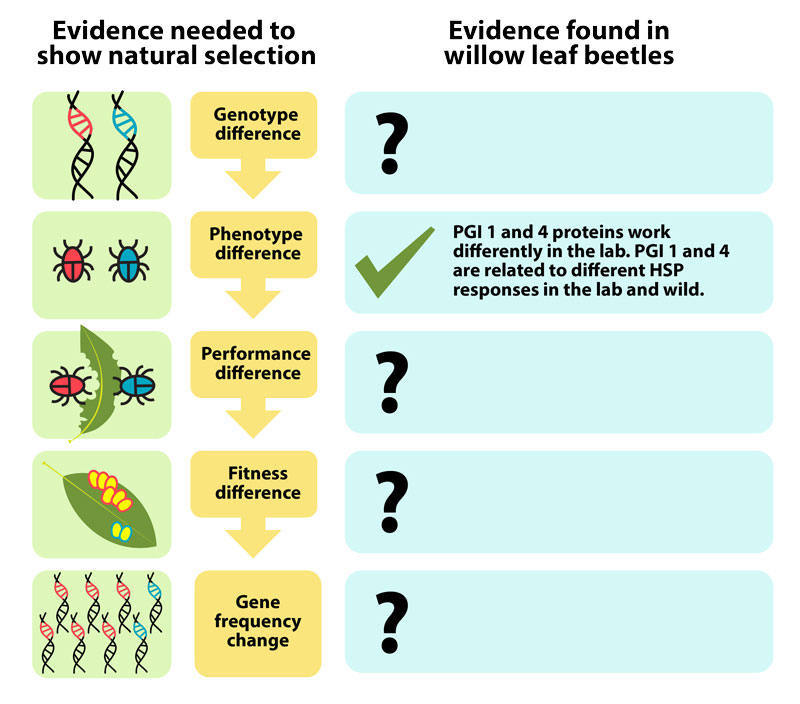The first clue that the physiology of beetles in the wild differed based on their PGI genotype came from another protein called a heat shock protein — HSP for short. HSPs have the important job of refolding other proteins that become unfolded under stress – for example, because they get too hot or too cold (so the “heat” in heat shock is a bit of a misnomer here since they are also helpful when it’s cold). In fact, it’s more accurate to think of them as “stress” proteins. HSPs repair other proteins and help organisms maintain basic cellular processes during any stressful period.
HSPs represent an evolutionary trade-off: to get an advantage, you have to pay a price. HSPs boost survival during stressful times, but their downside is that they are energetically expensive to build. An organism that spends too much energy producing HSPs might not have enough energy for other important things — for example, reproducing to its full potential.
In the lab, Nathan and Elizabeth’s team measured how the HSP levels of willow leaf beetles changed as temperature increased. They found that PGI 1-1 individuals start producing more HSPs at lower temperatures than did PGI 1-4 or 4-4 beetles. This makes sense in light of the temperature hypothesis. If PGI 1-1 beetles are cold-adapted, even a little heat would stress them out and trigger production of HSPs. And if PGI 1-4 and 4-4 beetles are more heat tolerant, they should be able to handle a few extra degrees before expending energy on HSPs.
To show that HSP physiology is related to PGI in the wild (and not just in the lab), the team collected beetles from a single habitat, measured their HSP levels, and then determined which PGI versions they carried. As expected, the beetles using only the cold-tolerant PGI version produced more HSP than beetles using the heat-adapted version of PGI. All the evidence aligned with their hypothesis, but they weren’t done yet…
Get tips for using research profiles, like this one, with your students.



